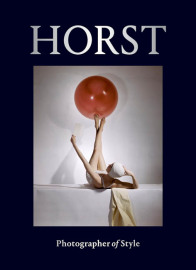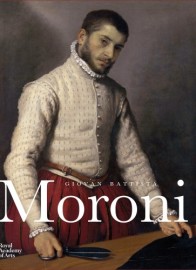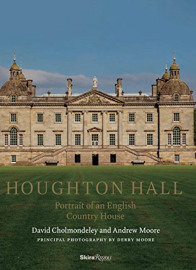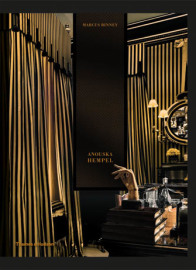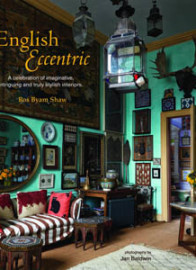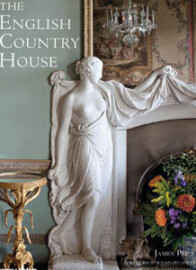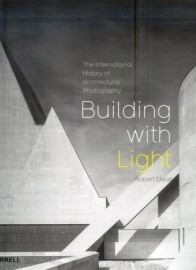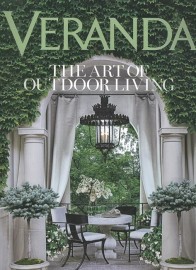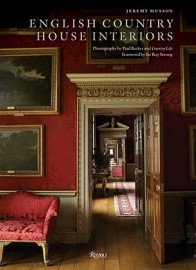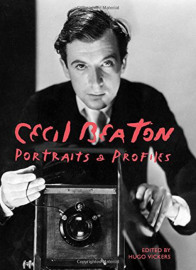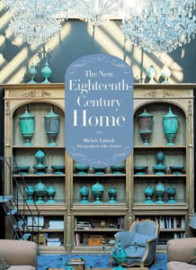The Interiors of Chester Jones
By Henry Russell, Published by Merrell, RRP £40
To order The Interiors of Chester Jones at insider price please visit GDC interiors Book Collection on Amazon
In an ideal world there would of course be no need for interior designers. Our world today quite rightly places a high value on idiosyncrasy and individualism, and your home and it’s decoration is your opportunity to express yourself. The famous historian of the home, Mario Praz eloquently articulated his philosophical view of the interior as:
“A museum of the soul, an archive of its experiences, it reads in them its own history, and becomes perennially conscious of itself; the surroundings are the resonance chamber where it’s strings render their authentic vibration.”
What distinguishes Chester Jones – one of the UK’s leading interior designers – is that, as Stephen Bayley puts it, “a Chester Jones interior does not look as if it has been designed at all… There is no higher compliment.”*
It is largely a consequence of his philosophy that Jones has been so successful in achieving characterful interiors that do not bear the overbearing imprint of a designer. “The Interiors of Chester Jones” inspiringly depicts many of these beautiful interiors, and describes how his design philosophy has evolved. One that is founded on both a remarkable personal modesty and a well-judged sensitivity to both building and occupant.
It was during a trip to post-war Milan as a young architecture student, that he first experienced the highly successful experiments in ‘contextual modernism’. Italian architects like Carlo Scarpa had shown how historic buildings could be sensitively renovated, giving a building a modern layer whilst respecting the integrity of the old. ‘Contextual modernism’ seeks to establish a balance between an existing structure and a proposed intervention. Clearly many buildings have undergone an evolutionary process, acquiring layers over many centuries. The challenge was to be able to do this in a modern context. This was a fascinating eureka moment for Jones that provided a practical framework for his entire design philosophy, and it wasn’t long before he could also apply it to interior design.
As a consequence of this notion of sensitivity to a valued building’s integrity, Jones recognised that although the buildings in which we live must serve contemporary needs, it is unlikely that what we do today will be future proof. He therefore articulated the need to leave as much as possible and allow for any changes to be reversible. The dangers to our heritage of an imbalanced approach were all too clear for a man who had been educated in the beautiful neo-classical environment of Stowe in Buckinghamshire, and who was disheartened by the brutal land-clearance programme in Britain after the war.
Jones’ design philosophy was also shaped by his sensitive and modest concern to design interiors that reflect the personality of the occupant, rather than that of the designer. If according to Praz, the interior is a “museum of the soul”, Chester Jones ensures that it is not his own soul that is displayed, but that of the occupant. “A sense of individual identity is highest on my list of priorities… Interiors should be about their occupants’ lives, their preferences and aspirations.” says Jones.
The designer appears to have arrived at this realisation partly through an awareness about the limitations of good design. Jones’ view is that a good interior deign is just the starting point or background that needs layering with all the owners’ cherished objects – including art and books. A goal that is achieved through the thoughtful styling of these personal possessions. Jones explains that it is only in this way that an interior begins to acquire personality, or rather reflect the personality, values, preferences and aspirations of the owner. Of course this presupposes that there is in the first place, some personality to reflect and some objects worthy of an artful arrangement. That is why the designer and client must, according to Jones, interview each other and if a basic chemistry is lacking, walk away.
The subtle conjuring of mood and atmosphere through Jones’ skilful arrangements of objects is one of his particular strengths as a designer; a talent that is probably owed to his background both as an artist and architect, along with 21 years working for Sybil Colefax and John Fowler. “The Interiors of Chester Jones” inspiringly illustrates this talent with its many detailed close-ups of carefully arranged art and objects. These beautiful and characterful still-lifes underline his view that when the occupant and his/her personality is successfully represented by a design, the whole then becomes much more than the sum of its parts.
This highly sophisticated designer is also quite right to rail against the peculiar ongoing preoccupation with ‘romantic historicism’, or the concern to recreate historically accurate interiors in their entirety:
“It is neither realistic nor desirable to see homes in terms of antique or modern, classical or rationalist. For one thing, in this age of eclecticism there are so many styles. Is it right, with regard to the design of interiors, to believe that only one style is valid, given the proliferation of architectural and fine art theories? The only judgement that is valid is to avoid the strict historicism in which every effort goes into the recreation of a single moment in time past… Such an emphasis on a limited range of ideas, as brilliant as they might be, sits uncomfortably with today’s interest in personal idiosyncratic expression.”
Leaf through the pages of interiors magazines and there they are: Art Deco, Georgian, Gustavian, mid-century modern. Many of them quite stunning, but all of them devoid of personality or life. If the interior of our homes is quite rightly considered a “museum of the [occupant’s] soul”, then it can hardly be a museum dedicated to its interior designer, nor to say Louis XIV, William Morris, nor Frank Lloyd Wright. These are nothing more than ‘anti’/’ante’ rooms or interiors: interiors that literally came before; interiors of the past that are now as dead as a tomb – and consequently ‘museums of dead not living souls’.
So what are we left with? What do we call this ‘style’? Generically this ‘style’ – if it is a ‘style’ – can only be called eclecticism. But what it really is, is a style that reflects the idiosyncrasy of the occupant. ‘My style’, ‘your style’ may be less catchy than ‘baroque’ or ‘post-modernist’, but nailing down a style is only a problem for people who write about it, like me.











